Rwanda’s wetlands and waterways are home to ten different herons, including two night-herons, and two species of bitterns. Most herons live near water, and in general the larger species prefer more open habitats. They all tend to have large broad wings with a slow somewhat leisurely wing beat and flight pattern. Unlike storks, herons fly with their head and neck retracted. Interestingly, and unlike most other groups of birds, herons and bitterns have a comb-like middle claw of the foot called a pectinate claw, which is used for grooming the feathers. Varying in shape, size and plumage colour – the herons and bitterns are awesome birds to observe, and Rwanda provides great opportunities to do so.
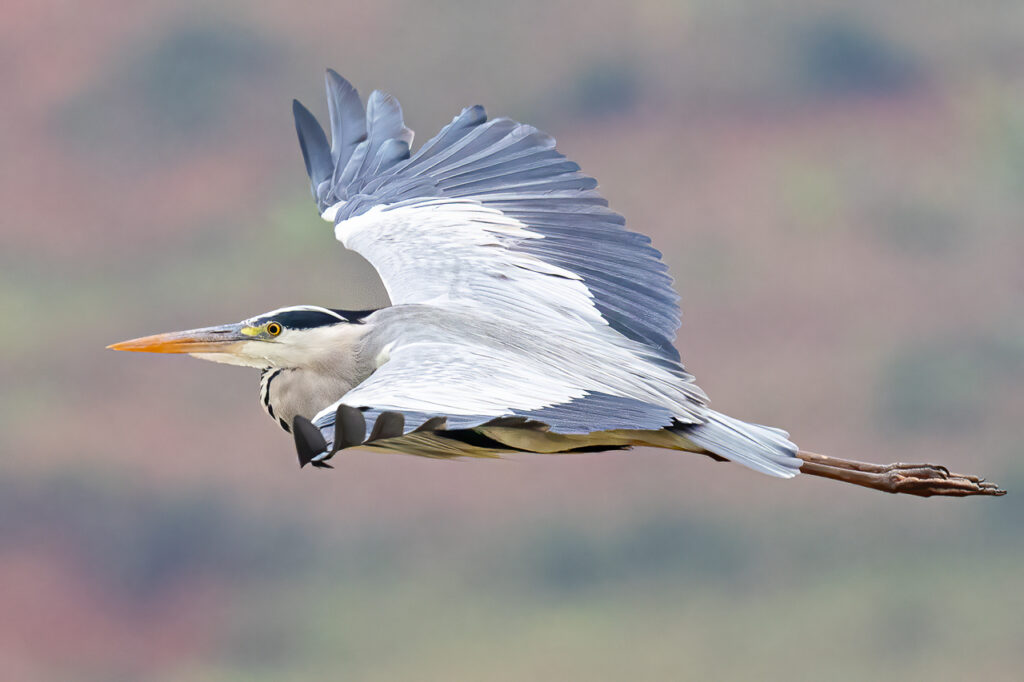
The Dwarf Bittern and Little Bittern have short legs, short necks, and their sharply-pointed bills are serrated near the tip. Both are also particularly shy, often concealing themselves in dense aquatic vegetation, including papyrus. Because of this they are more often heard than they are seen. The two species prefer their own company, living solitary lives outside the breeding season. When disturbed or “alarmed they assume the ‘bittern posture’ – facing the danger with bill pointing skyward and eyes peering forward” (Carnaby 2019, p. 538). Streaking on their throats enable them to blend with their surroundings of reeds and grasses – see photograph below. Whilst the Little Bittern is a resident here in Rwanda, the Dwarf Bittern is a rarely seen intra-African migrant that follows the continent’s seasonal rains. The best time to see the Dwarf Bittern here in Rwanda is between ‘November and May’ (Vande weghe & Vande weghe 2011, p. 76). Both species prefer to hunt in flooded areas, often in secluded pools close to dense cover. I have been lucky to observe Little Bitterns at Umusambi Village and Nyandungu Eco-Park, both sites are located on the eastern outskirts of Kigali.
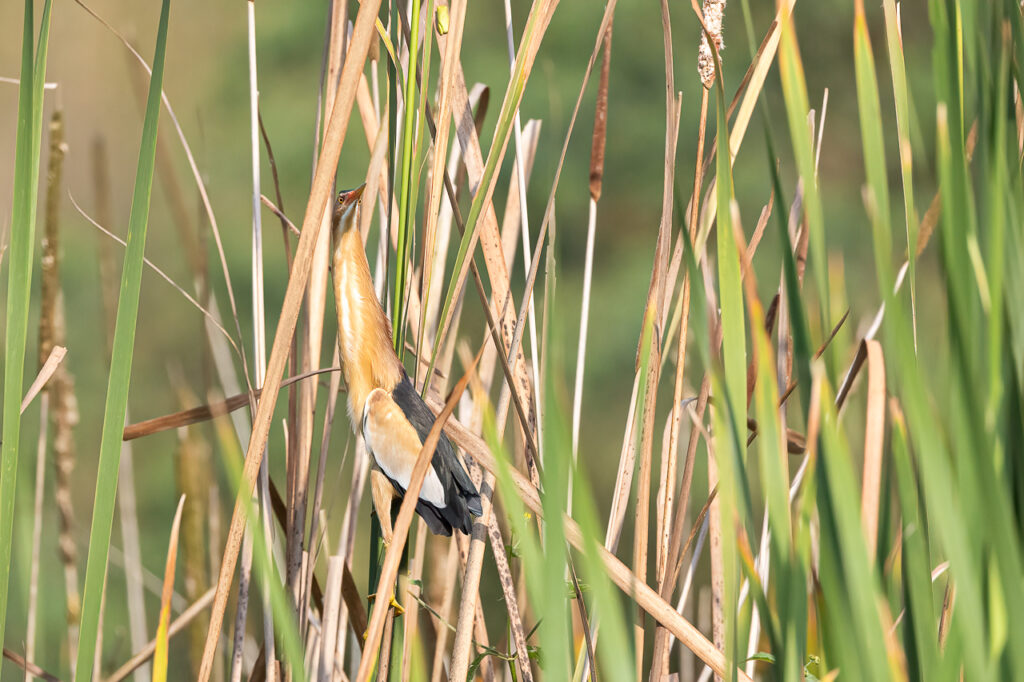
The two night-herons are stocky birds with relatively short legs, very short necks, and large eyes with a big pupil to see well at night because they are nocturnal. The Black-crowned Night-heron is ‘the most widespread heron in the world, breeding in every continent apart from Antarctica and Australia’ (Birds of the World, Online). The White-backed Night-heron is an occasional visitor to Rwanda whereas the Black-crowned Night-heron is a resident. As the name suggests they are both nocturnal and can be found roosting during the daylight hours. When disturbed, the White-backed Night-heron ‘faces the danger and also adopts the bittern posture’ (Carnaby 2019, p. 643) described above. Black-crowned Night-herons roost in trees and reeds, preferring vegetation over-hanging water. I have spotted them roosting on the banks of the Nyabarongo river, located on the northern outskirts of Kigali. I have also seen them at the Rugende fish farms east of Kigali, and they can sometimes be heard flying calling as they fly over the city at night. Lakes Ihema and Mihindi in Akagera National Park provide great opportunities to see large roosting colonies. White-backed Night-herons on the other hand are solitary nesters. They are both socially monogamous and pairs will preen each other (allopreening) to maintain their pair bond. Both parents incubate the eggs and feed the hatchlings. Initially the chicks are fed by regurgitation bill-to-bill, and as the chicks get older food is dropped onto the nest.
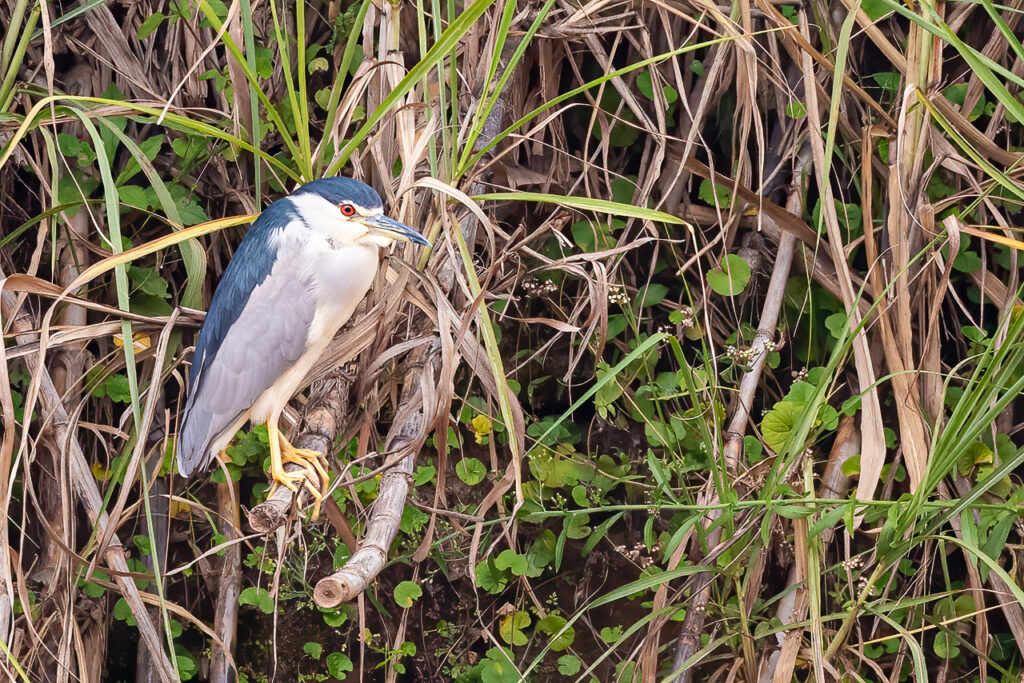
Of the eight remaining herons found in Rwanda, the Black-headed Heron is the only one not dependant on water for feeding. They can therefore be found in open grassland and other habitats not usually associated with herons. Late one evening, having collected visiting family members at Kigali International Airport I spotted a Black-headed Heron stood on a small patch of grass at the exit! I think it’s fair to say we were all surprised to see it!

The Grey Heron, Malagasy Pond Heron, and Squacco Heron are the only herons to have different breeding plumage, and the Rufous-bellied Heron is the only one to have sexual colour dimorphism – the plumage of the male and female differs slightly. The Goliath Heron is the largest heron in the world, looking like a huge version of the more widespread Purple Heron. These herons all mostly hunt for fish and aquatic invertebrates wherever shallow water is found across Rwanda, although the Malagasy Pond Heron only visits continental Africa in the non-breeding season.
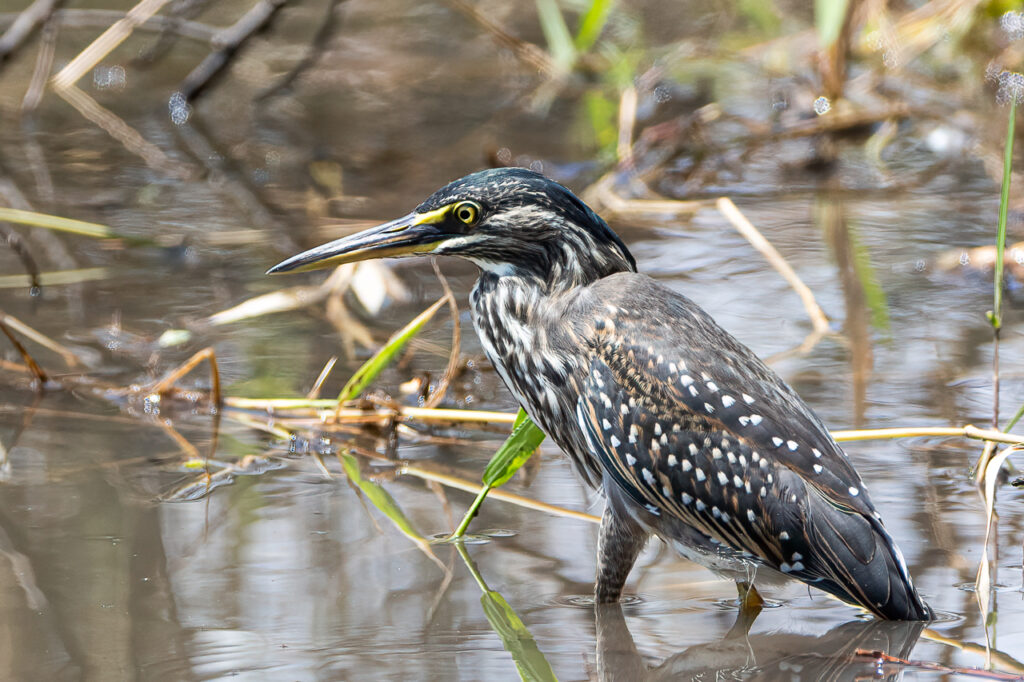
The two main techniques employed by herons are the ambush method, where they stand perfectly still in shallow water and wait for prey items to come to them, and a slow wading method in which they move methodically through the shallows jabbing at passing prey. Rwanda’s lakes and wetlands are all great places to watch these patient hunters in action. As they stand in wait, you can tell when they have spotted an opportunity. They will lean forward with their necks slightly coiled, lining up and carefully planning for one lightning fast strike. Within a fraction of a second, they extend their neck and explode into the water grabbing the prey in their bill. Out of water they reposition the prey in their mouth with a quick toss – so it can be swallowed head first.
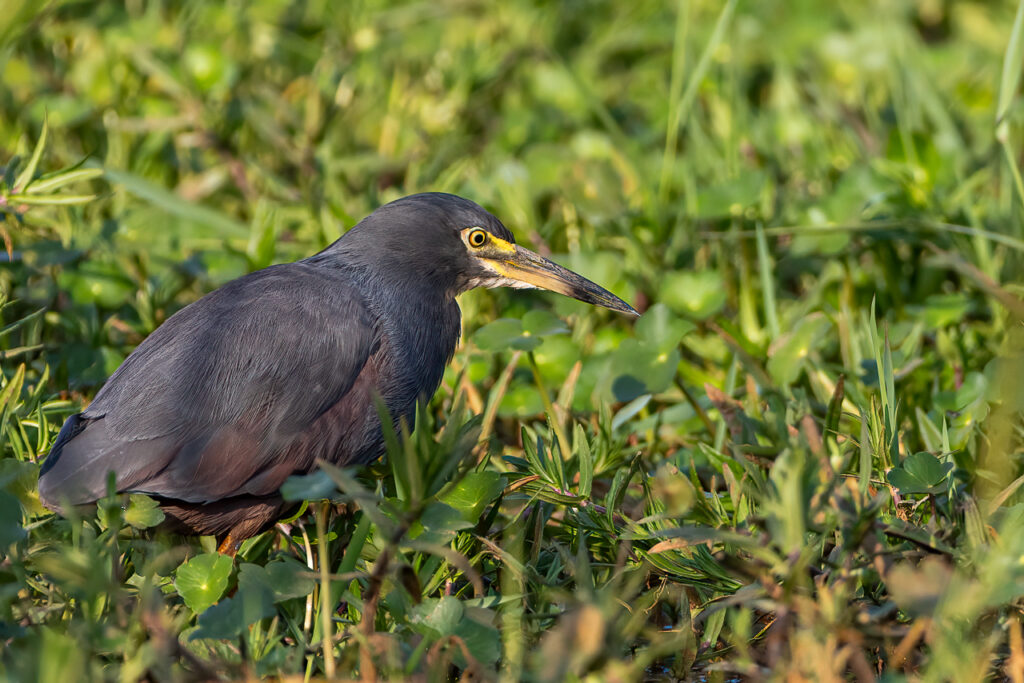
Birds of the World (Online), The Cornell Lab of Ornithology, Black-crowned Night Heron, [Online] Available at: https://birdsoftheworld.org/bow/species/bcnher/cur/introduction, Accessed: 29/8/2023.
Carnaby, T. (2019) Beat About the Bush: Birds, Jacana Media, Johannesburg, South Africa.
Vande weghe, J. P. & Vande weghe, G. R. (2011) Birds in Rwanda: An Atlas and Handbook, Rwanda Development Board, Kigali, Rwanda.

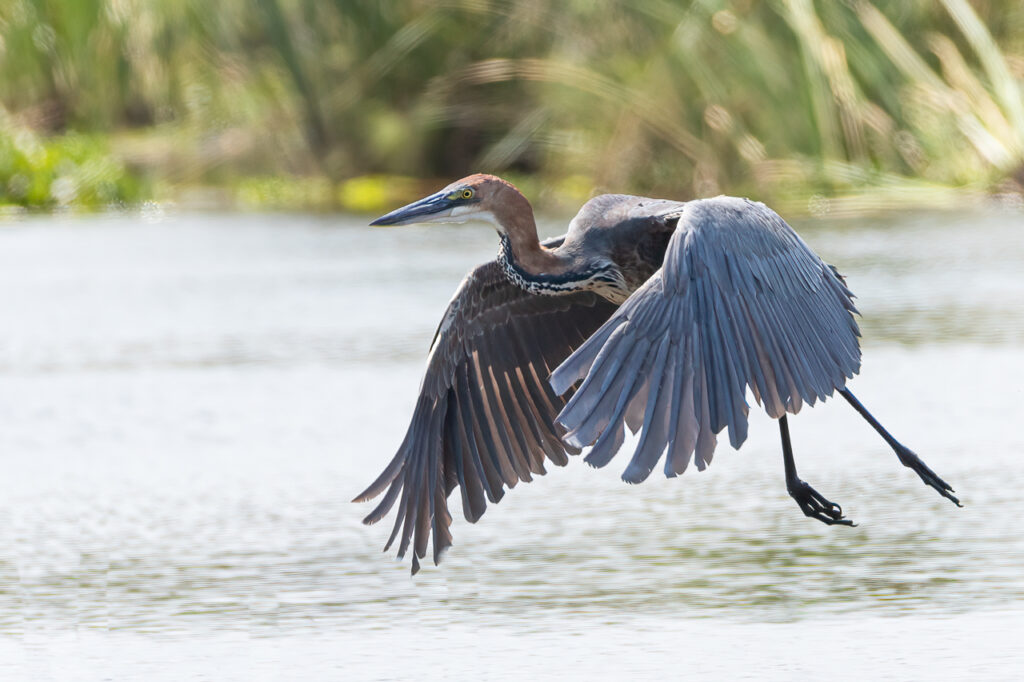
A fabulous and very useful information about beautiful RWANDA’S different kinds of HERONS AND BITTERNS. What makes Will’s great work even greater is the superb methods of his photography which I like very much and the detailed information provided. What attracted my full attention in this very special masterpiece is the information about the two main techniques employed by herons and the minute description of these attractive birds. Well-written and well-done Will! My hat is off for you.
Great photos, as usual, Wil.
Informative article
Glad you enjoyed the article, and thank you for your feedback – really appreciated.